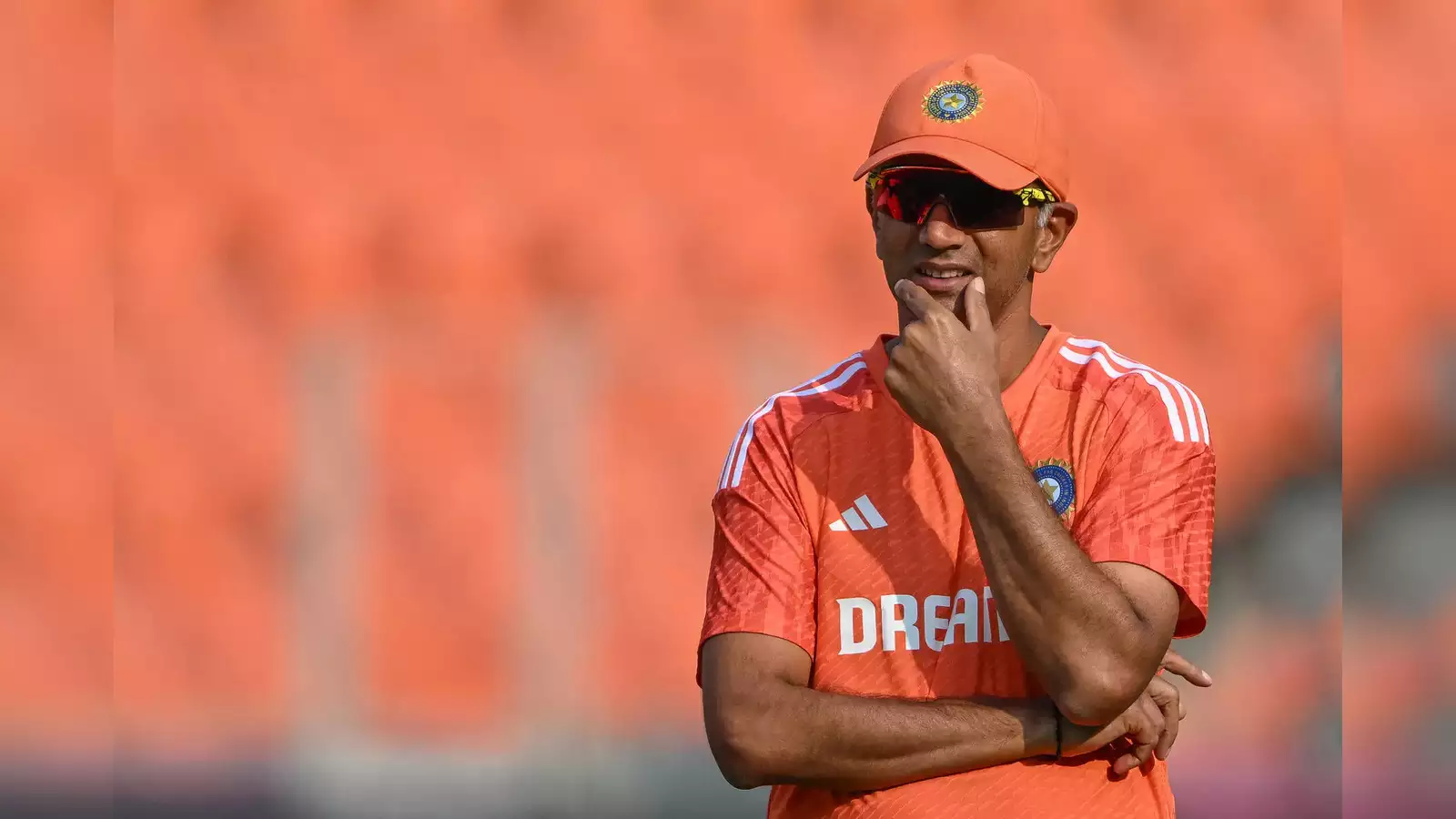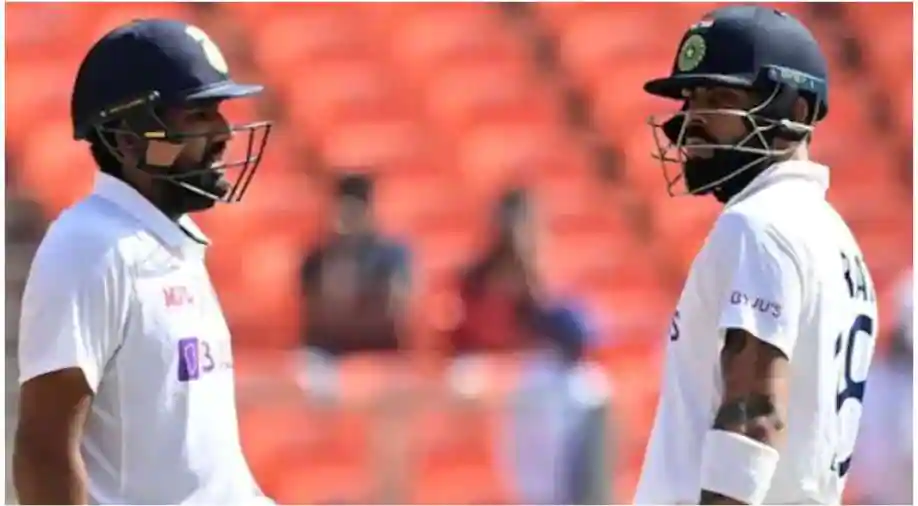I wrote about how India exceeded expectations and achieved the remarkable feat of reaching the final 4 without any hiccup in the middle as the team is known for. I have also analysed the positives for India throughout the World Cup. It has been a heartbreak for us the Indians but it was something that was very much expected. Please read one more heartbreak for us if you have the time. Now, I will proceed with the game itself and Rahul Dravid’s position.
Though the Indian team have given us some really soothing moments throughout the tournament, does it mean that what happened in the finals can be dismissed as an aberration? Yes, it was a bad day but if it is dismissed, how can the team learn from their mistake? Analysis of the entire game, from the batting standpoint of view and the bowling point of view, is very much needed. Infact, it is essential. If the BCCI fails to conduct such an analysis, come 4 years, the same story will be repeated.
First, the batting
Rohit continued his high risk approach even in the finals. There was nothing wrong with that. He wanted to establish authority over the bowlers right at the outset and he didn’t budge whatever happens. In the league games, South Africa was the biggest threat and their primary weapon was Marco Jansen. The way Rohit dealt with Jansen was brutal. Jansen never recovered from that assault. It showed in his spell in the semifinals against Australia. Likewise, Rohit wasn’t afraid of playing his shots against any bowler. Could he have controlled himself a little bit having already scored a 6 and a boundary?
In hindsight, he could have but to allow Maxwell to get away with just a few runs would have been wrong. Hence, there was nothing wrong with Rohit trying to hit him out of the attack. It showed in the end when Maxwell, after Rohit was out, bowled his overs cheaply.
However, the same cannot be said of his partner, Shubman Gill. A lot was expected of him after his stellar exploits in the IPL and against lesser teams. Dengue laid him low for the first few games and he could be excused because of the effects of dengue for a further couple of games but beyond that, if not for Rohit at the other end, Gill’s lack of performance would have been exposed threadbare. He looks lazy and laid back on the field. He looks like someone who does not want to work hard to improve and would rather sit back and relax and hope for things to fall in place. That is the impression that one gets. The finals weren’t much different. He has been given a lot of chances and the time has come to demand accountability from him against important opponents and key games.
Kohli and Rahul were strokeless
India actually lost the game in the middle overs. Kohli and Rahul remained strokeless. Suddenly, out of nowhere, in the finals, they forgot to rotate the strike. India got off to a good start, courtesy of Rohit Sharma but it was completely squandered by mindless batting by these two. What were they thinking is beyond everyone who watched the game. They were wrapped up by the fear of the finals.
“We haven’t played any fearful cricket in this final. In the middle overs, they bowled really well and we had lost three wickets. So a period of consolidation was needed, and every time we thought we could get on the attack, we would lose a wicket,” he said. “If you lose wickets, you have to rebuild. We didn’t set out to play defensively.”
Rahul Dravid can say all that he wants but it was clear for the viewing public that both Kohli and Rahul, despite their years of experience were fearful in those middle overs. The pitch can be blamed for not supporting strokeplay and it improved late in the afternoon. That was all the more reason for them to attempt to score runs. On such a pitch, you cannot hope that the later order batsmen will up the ante and will be able to make up for lost time. It just does not work like that.
When Kohli was out, we weren’t in a good position despite him playing the waiting game. It became worse when Rahul got out. India did not progress at all despite not losing a further wicket. All of that was fear and nothing else. Rahul Dravid can deny all he wants but that is the truth.
Jadeja & Surya complicated the situation
When Jadeja came in, he remained rooted to the crease. Neither was he able to rotate nor was he able to hit. Perhaps, he had tarmac on his feet that did not allow him to move. Agreed, he didn’t get to bat in too many games and was slightly lost for touch but for that to surface in the final, it was wrong timing. Surya is another who is a waste of space. I sincerely hope that his ODI career has ended. Ishan Kishan would have been a better choice than Surya.
Second, the bowling
Now, I cannot find any fault with our bowlers because they were brilliant throughout the tournament and if only the batsmen had scored 300, the bowlers would have won the game. However, I will say this much that Jasprit Bumrah, hasn’t really performed in crucial, high profile games. Be it Test Cricket, ODI or T20. Period.
Third, Dravid’s position
I firmly believe that Dravid’s position has become untenable. In 2 years, he does not really have any achievement worth shouting about. On the contrary, there are multiple failures under him. Except for that one series win against Australia, on some questionable pitches, his CV will not make for a good reading. I expected him to resign as soon as the final was lost but to date, he hasn’t. I hope that the BCCI is not thinking of extending his contract and neither do they appoint Laxman. Both Dravid and Laxman are similar in their methods, With Laxman at the helm, there will not be any value addition. It is time to look at foreign shores. Perhaps, a Ponting or even Nasser with full powers.
Wrapping up the game itself and Rahul Dravid’s position
Dravid and the Indian team can believe that it was not fear but the fact will remain that it was fearful batting that cost us the World Cup.
Other World Cup blogs



